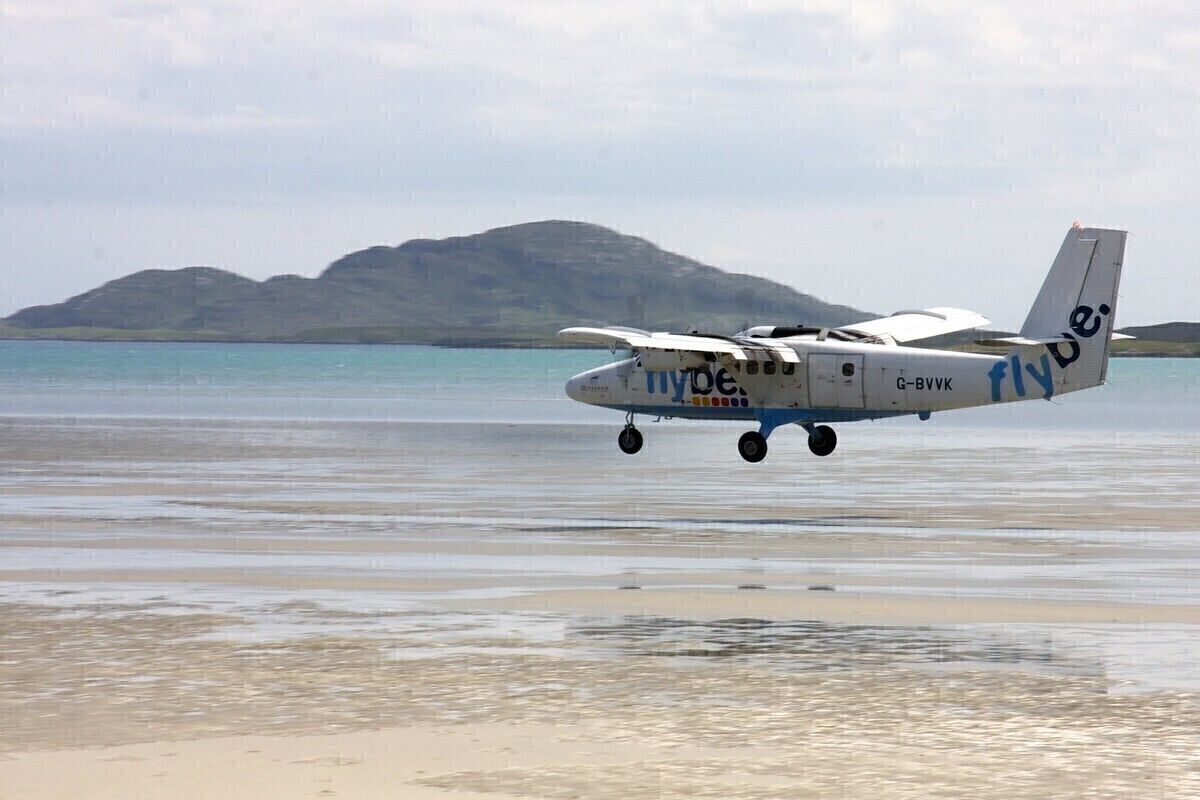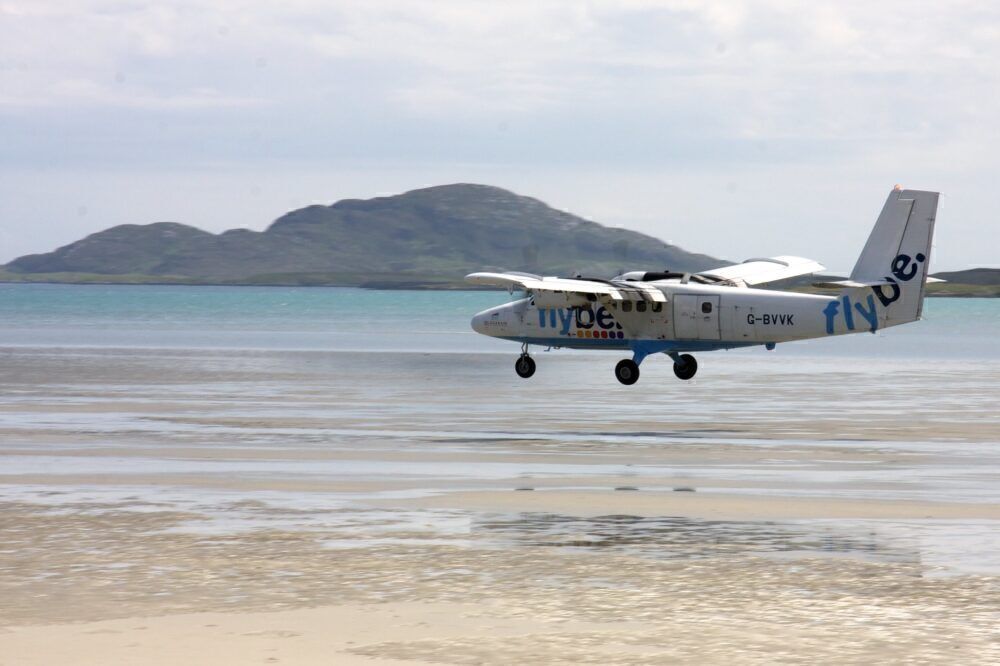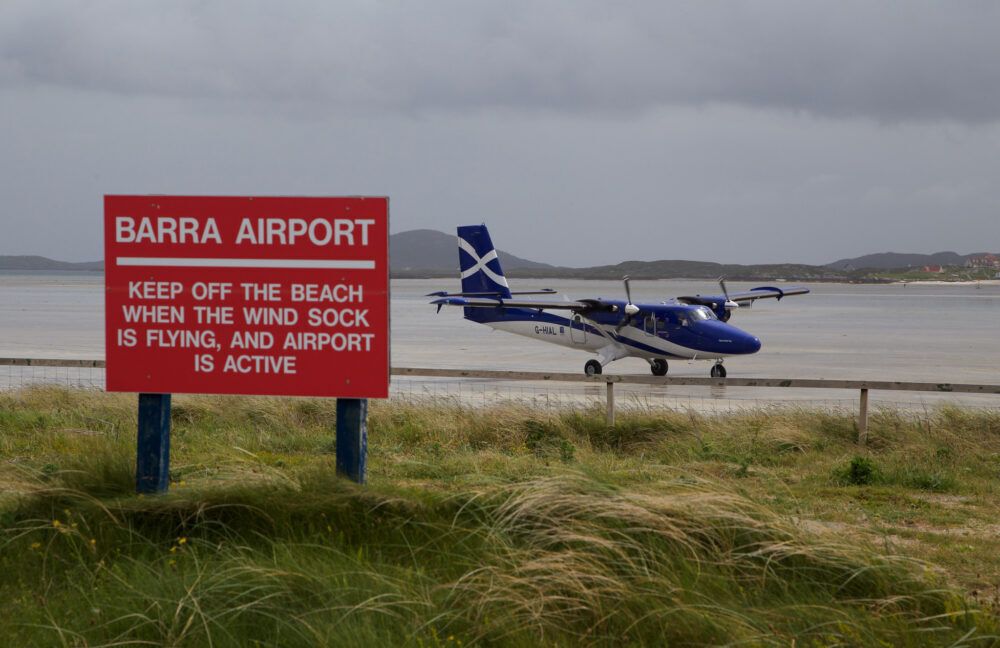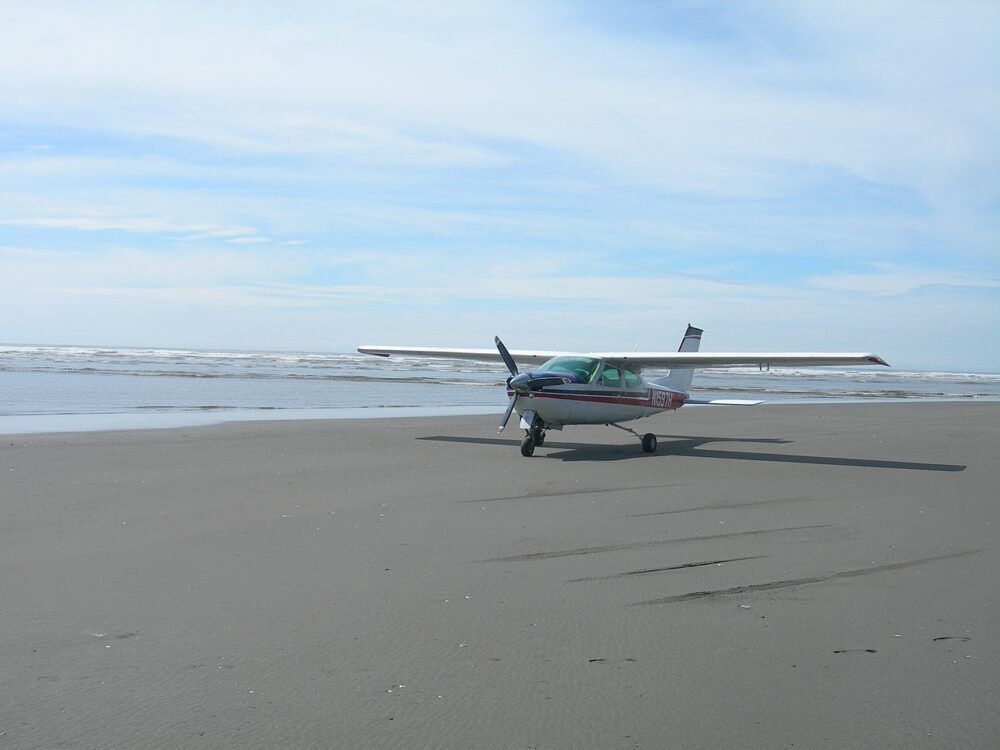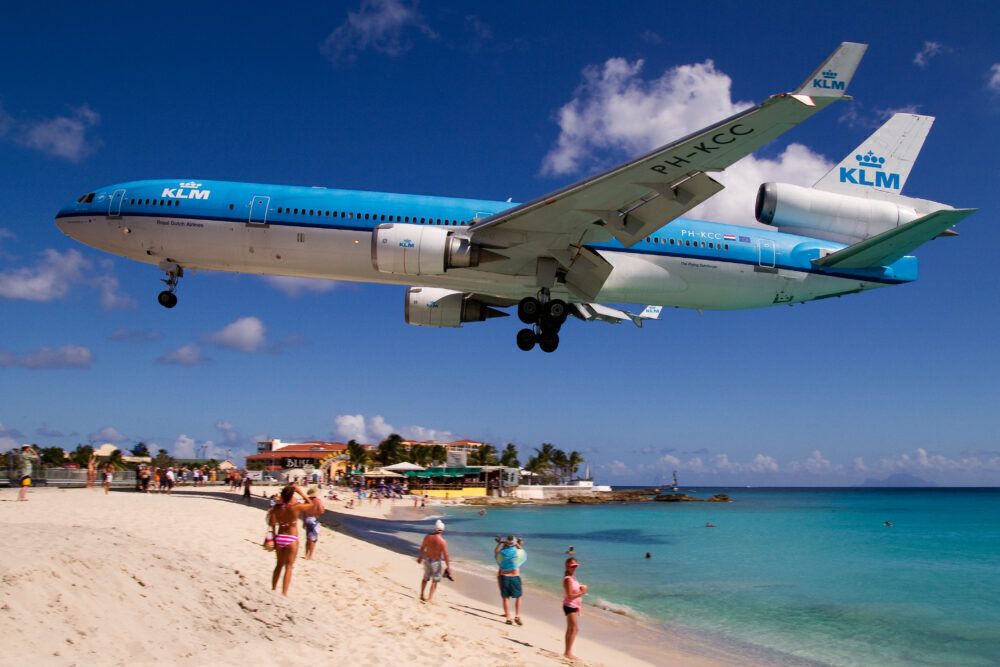As explored in a recent article, most of the world's airport runways are paved with concrete or asphalt. However, there are certain exceptions to this trend. We have previously explored gravel and ice runways, but what about beaches? Let's take a look at where passengers should be wary of sand in their shoes when boarding their flights.
Barra, Scotland
Arguably the most notable airport in the world to have a runway on a beach is Barra (BRR) in Scotland. While it is not unique in its runway composition, it is the only airport with a sandy landing strip that serves regularly scheduled commercial flights. Located at the northern tip of the island of Barra in the Outer Hebrides, Loganair flies there from Glasgow.
The beach on which the airport's three runways are situated is subjected to high and low tides at different times of the day. This limits the hours in which aircraft can safely utilize the sandy landing strips, which are laid out in a triangle, ranging from 680 to 846 meters long. Furthermore, planes cannot use the airport at night apart from in emergencies.
Loganair's services between Barra and Glasgow take one hour and 15 minutes, and provide the island with a vital link to the Scottish mainland. Operated by 19-seat de Havilland DHC-6 'Twin Otter' aircraft, these flights generally serve the route two or three times a day.
Stay informed: Sign up for our daily and weekly aviation news digests.
Copalis State, US
While Barra is the only beach-based airport that plays host to regularly scheduled commercial services, there is also such a facility for general aviation. Intrepid general aviators can find this facility on the Pacific Coast in the northwestern US state of Washington. Known as Copalis State Airport, this facility has no IATA or ICAO airport codes, and no tower.
However, it does have an FAA LID (Local Identified) of S16. The state-owned airport contrasts to Barra in having just one runway. This sandy landing strip was 1,372 meters long, and has the headings 14/32. However, FAA data lists it as now being just 1,113 meters long.
According to the Washington State Department of Transportation, This shrinkage is the culmination of various geographical processes. These include river migration and coastal erosion. Much like Barra, aircraft can only use the airport at low tide.
Popular beaches for avgeeks
While these sandy landing strips are a real rarity, a slightly more common phenomenon is beaches situated at the end of runways. These are immensely popular among avgeeks, with many making journeys to such resorts to take the perfect photo.
The most famous of these is St Maarten, in the Caribbean. Owing to the island's links to France and the Netherlands, it has hosted iconic long-haul aircraft like the Boeing 747. As you can imagine, this makes for a spectacular sight when passing low over the beach. Skiathos Alexandros Papadiamantis Airport in Greece is a similar photographic hotspot for this reason, although its mile-long runway restricts the size of aircraft that can land there.
Have you ever used an airport with a beach runway? What other unusual surfaces have you landed on or taken off from? Let us know your thoughts and experiences in the comments!

